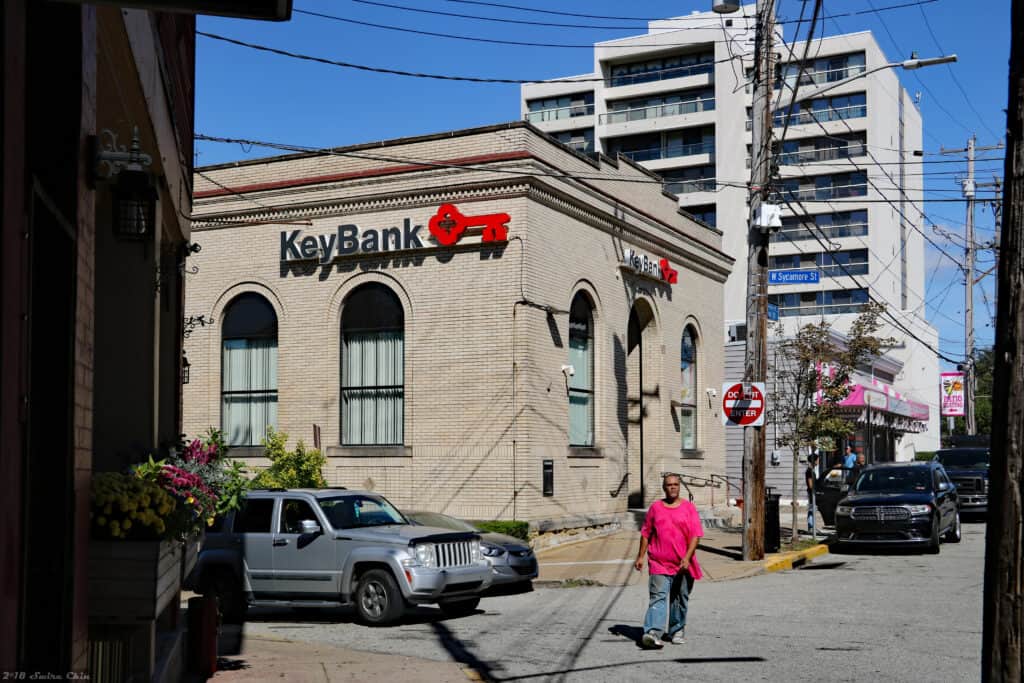Summary
Community groups are asking Community Reinvestment Act regulators to accurately assess KeyBank's poor performance and broken promises.
Federal regulators should downgrade KeyBank’s CRA rating and launch a redlining investigation into its mortgage lending – or risk signaling that banks are free to ignore their obligations and break promises to the public.
That’s why scores of community groups have formally requested that the Cleveland-based mortgage giant face consequences, in a letter to the regulators that are currently conducting KeyBank’s CRA exam. Regulators should downgrade KeyBank’s CRA rating, investigate its mortgage lending performance for redlining and hold the bank accountable for public commitments it made in pursuit of its 2016 merger with First Niagara Bank, NCRC and over 80 organizations throughout KeyBank’s footprint wrote in the letter.
As the banking industry continues to consolidate, it is increasingly urgent that the public and regulators hold banks accountable to serve all communities – not just the wealthy and powerful. Bank services are critical to the country’s growth and stability, and equally critical to local economies. That is why banks are required to serve the entirety of the communities in which they do business. This is no mere moral assertion or abstract notion. It is codified law, affirmed many times over by the Supreme Court. It is a tangible and enforceable obligation that goes hand in hand with the numerous privileges that come with a federal bank charter.
KeyBank knew its merger with First Niagara would trigger heightened scrutiny, and entered into a Community Benefits Agreement negotiated with NCRC and its members to address regulatory issues with the application. KeyBank made numerous commitments to increase CRA-eligible activity. KeyBank also committed to job retention in the First Niagara Bank region in an agreement with Senator Chuck Schumer and U.S. Representative Brian Higgins.
In its October 2015 investor presentation about the First Niagara merger, KeyBank noted the “cost synergies” that provided a “strong upside for shareholders” and “high degree of market overlap accelerates benefit realization.” One would expect that given KeyBank’s legal obligation to communities, and its public commitments, KeyBank’s merger “cost synergies” would amplify the merger’s public benefit.
Unfortunately, although the merger was profitable, KeyBank ignored its obligations once the merger closed. A November 2022 report from NCRC, REDLINED: KeyBank Failed Black America Despite Its Commitments to Improve, showed that KeyBank drastically reduced its share of home purchase lending to borrowers with low and moderate incomes after regulators approved the merger from which bank executives had promised to increase such lending. The numbers also showed that KeyBank had the lowest percentage of mortgage originations to Black borrowers among the 50 largest mortgage lenders and that the bank appeared to have engaged in systematic redlining.
KeyBank failed Black borrowers and failed low- and moderate-income communities. And the new cash generated by those “cost synergies” got paid out to shareholders in a massive post-merger hike in the bank’s dividend, rather than invested into fulfilling its CBA promises.
Yet for all that, regulators gave KeyBank an Outstanding rating in its December 2020 CRA Performance Evaluation.
KeyBank’s new CRA exam takes place this month. The Office of the Comptroller of the Currency (OCC) should downgrade KeyBank’s CRA rating and launch a redlining investigation of its mortgage lending. The OCC and Federal Reserve should also demand a higher standard of accountability when it comes to public commitments banks make while seeking merger approval. These commitments cannot be empty promises without consequences.
KeyBank’s betrayals offer a concrete opportunity not only to aid the communities it has neglected, but to signal to the whole industry that banks must keep their merger-related promises. Without stricter enforcement of CRA and other banking laws, banks will continue to consolidate, focus their services on wealthier communities and place shareholder profits ahead of their legal obligations to provide services to the entire communities in which they operate.
Banks exist for a public purpose. One of their purposes is to provide fair and responsible loans and services to the entire community, not just the wealthy and powerful. Banks must be responsive to local needs following mergers and honor their commitments to communities. If they fail, regulators ought to hold them accountable – not label them “Outstanding.”
Catherine Petrusz is NCRC’s Senior CRA Analyst.
Image courtesy of Can Pac Swire via Flickr.



